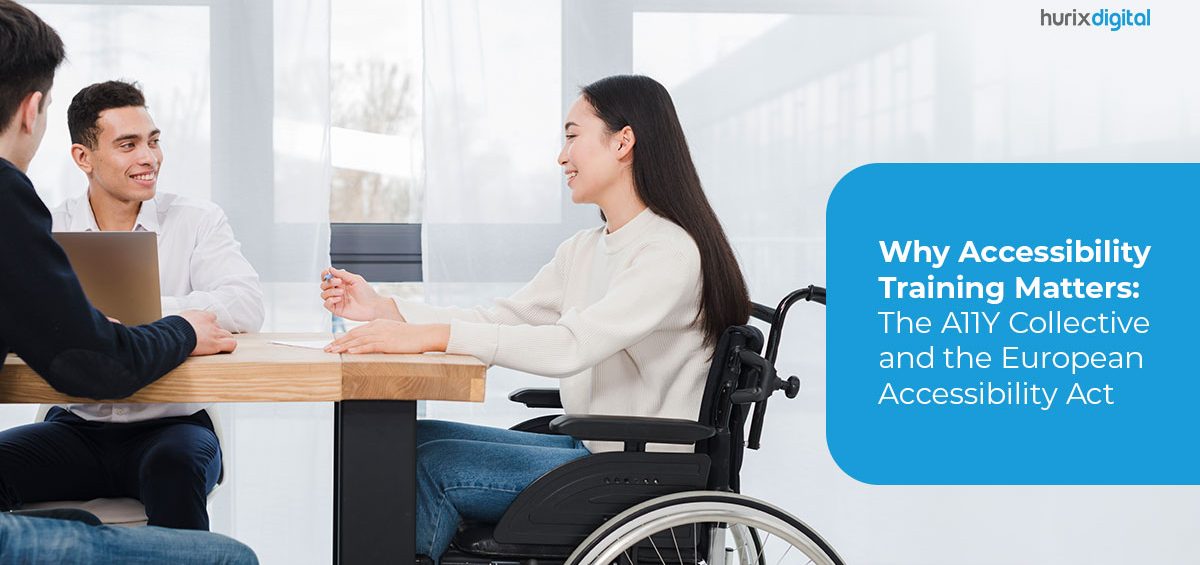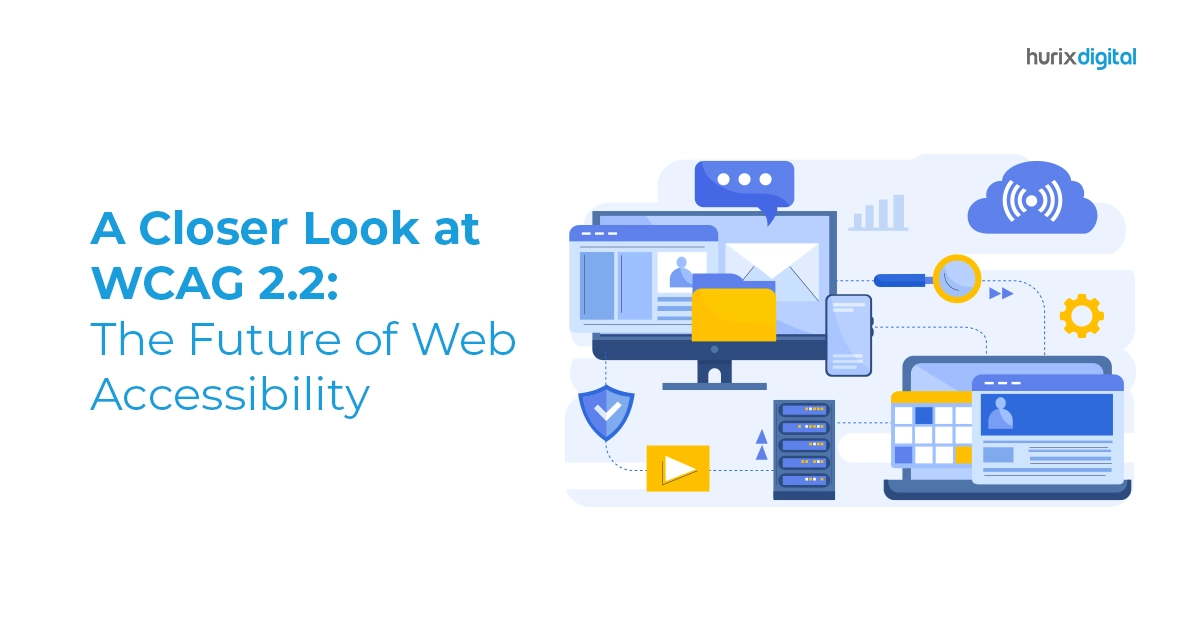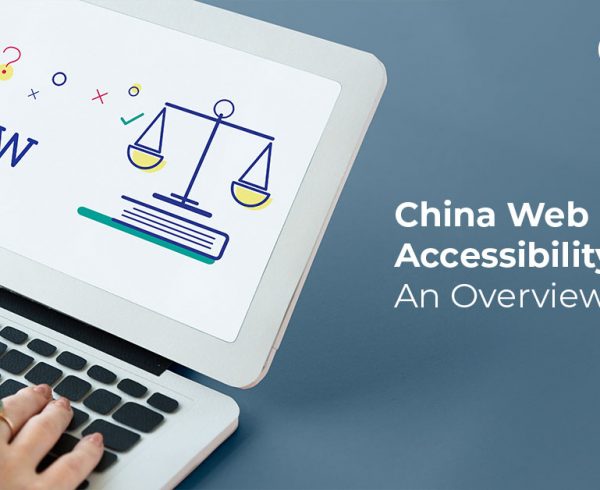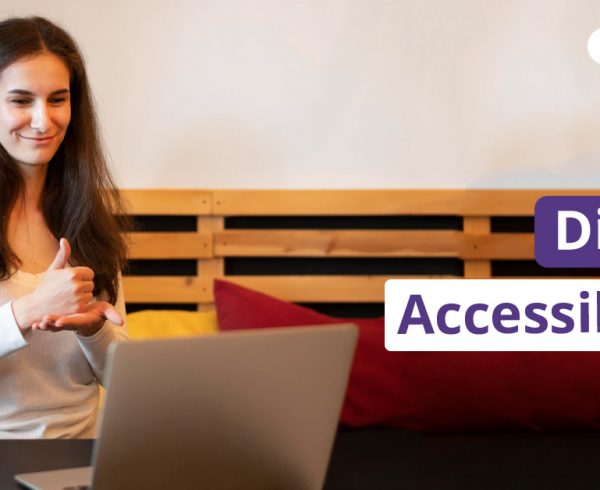Summary
This blog explores the importance of accessibility training in the context of digital learning. It defines accessibility and its features, and highlighted the rise of accessibility compliance. It also discusses the productivity and training outcomes of accessibility training.
From reskilling to upskilling, the learning and development (L&D) industry is increasingly influenced by new technologies. Authoring software, business simulations, and gamified virtual learning are just the tip of the iceberg of training solutions — but is this content accessible?
After the COVID-19 pandemic, institutions shifted from conventional training approaches to online learning platforms. The transition resulted in remarkable advancements in education technology, improving learning accessibility. However, individuals with disabilities still encounter significant challenges in accessing equal educational or training resources.
Almost 1.3 billion individuals globally deal with some kind of disability. Moreover, studies indicate that the total number of individuals with disabilities is expected to grow two-fold by the end of 2050. Accessibility training should be a core part of every L&D initiative, from developing content to which tools are leveraged to create it.
Now is the perfect moment for businesses and organizations to explore the importance of accessibility training: What does it mean, and why does it matter?
That being said, this blog explores the significance of accessibility training in the context of digital learning, highlighting the contributions of the European Accessibility Act (EAA) and the A11Y Collective.
Table of Contents:
- What is Accessibility in Online Learning?
- What are the Features of Accessible Digital Platforms?
- What Is the European Accessibility Act (EAA)?
- The Importance of Accessibility Training
- Final Words
What is Accessibility in Online Learning?
The primary objective of accessibility learning is to guarantee that every individual, irrespective of their disabilities, can leverage online learning platforms effortlessly.
In today’s interconnected world, accessibility has become more important than ever. It refers to designing and developing learning tools and other resources that promote inclusivity and equal participation of all individuals.
What are the Features of Accessible Digital Platforms?
Some of the major features of digital platforms with accessibility include:
- Closed captions or additional text on videos to make them accessible to individuals with hearing impairments.
- Alternative text for images to make them accessible for individuals with visual impairments.
- Keyboard accessibility to ensure individuals with limited mobility can explore digital content using a keyboard over a mouse.
- Descriptive links and headings to make learning content easier to understand for individuals with cognitive impairments.
- The color contrast makes information easily readable for individuals with visual impairments.
What is the European Accessibility Act (EAA)?
The EAA is a breakthrough initiative by the European Commission, implementing the United Nations Convention on the Rights of Persons with Disabilities. It addresses the issue of marginalization and the accessibility gap among individuals with disabilities.
It has been estimated that the EAA will benefit at least 87 million individuals – almost one in five Europeans with impairments. It will also help older people with temporary or partial disability. The EAA will improve individuals’ accessibility to e-books, computers, banking services, e-commerce, etc.
Enterprises and their customers will also benefit from the Act’s standardized accessibility mandates. For SMBs, complying with accessibility regulations will simplify cross-border trading and offer certainty for selling products and services throughout the European Union (EU). Similarly, the new law will encourage innovation by empowering businesses to provide customers with a more inclusive range of products and services at competitive prices.
Also Read: Understanding the Basics of European Union Accessibility Laws and Acts
The Importance of Accessibility Training
First and foremost, including accessibility in L&D programs is just the right thing to do. Every individual can learn, grow, develop, and contribute their ideas and perspectives.
Even when you look beyond the moral landscape, however, there are several benefits to making digital content as accessible as possible, from boosting productivity to regulatory mandates.
1. The Rise of Accessibility Compliance Mandates
Avoiding penalties and lawsuits are the best motivators to keep L&D resources more accessible. Moreover, legislation such as the Americans with Disabilities Act (ADA) and the EAA mandates organizations to make learning inclusive for all individuals.
For companies looking to avoid lawsuits and fines, the W3C WAI Web Content Accessibility Guidelines (WCAG) mandates that all training resources should be built on these four key design principles:
- Perceivable
- Operable
- Understandable
- Robust
These design principles can be achieved using the right technologies and practices. For example, perceivable content requires alt text or video captions, while operable content includes keyword-only transcripts to support people with visual impairments.
2. Boosts Productivity & Training Outcomes
Amidst all the legal and moral barriers to accessibility training, it’s easy to miss the basic principle behind it. Accessibility training ensures that all individuals complete their L&D programs and engage with, absorb, and learn new skills.
A study by McKinsey indicates that the demand for online learning is rising, and good training design and delivery significantly impacts the performance and productivity of individuals.
3. Inclusivity Keeps Morality at the Heart of Digital Training
Adhering to accessibility guidelines isn’t just about keeping the lawmakers happy – it’s about showcasing that you genuinely care about individuals’ learning experiences. It’s a linear and thoughtful commitment to inclusivity that speaks to your organization’s brand voice, and all employees will appreciate your effort in this matter.
After all, accessibility training doesn’t just benefit people with disabilities – it also helps people with temporary impairments like:
- Situational conditions like bright or noisy environments
- Broken Bones
- Age-related barriers
- Challenges due to low internet bandwidth
According to Boston Consulting Group (BCG) research, organizations focusing on inclusive practices have better employee satisfaction and engagement rates. The study indicated that 81% of employees who feel their workplace is inclusive are also happy in their jobs.
This suggests that producing accessible training materials and resources is more than an obligation. It represents a business’s commitment to having happy, cared-for, and productive staff through inclusivity.
Also Read: 10 Ethical Considerations and Data Privacy Laws to Consider in EdTech Industry
Final Words
Accessibility training is vital to building a more inclusive and moral society. It not only helps organizations with accessibility regulations but also enhances user satisfaction, expands market reach, and improves brand reputation.
Organizations like Hurix Digital comply with the EAA and the A11Y Collective practices and are crucial in raising awareness and providing training materials to create a more accessible world for everyone.
If your organization wants to achieve accessibility compliance and embrace inclusivity, Hurix Digital is here to make the journey easier! Contact our specialists to learn about and implement the guidelines in your digital platforms.









